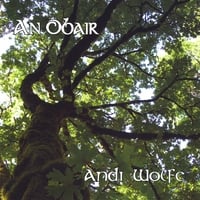
This is, finally!, the last post from Michael's and my trip to Ireland.
After visiting Newgrange, we hopped on a bus to take us to the other Bru na Boinne site, Knowth. It was still raining, but we were used to that by now.

Knowth is a site with many small burial mounds, some of which are passage tombs aligned with one of the solstices.

The small building is where you show your pass and pick up a loaner umbrella, if one is available.

The curb stones on some of the tombs have been excavated.

Our tour guide was the person on the far right in this picture.

This is a small passage tomb.

These don't appear to have been excavated, but maybe they're smaller tombs.

The neolithic art here is more varied than what is at Newgrange.

There are concentric circles, spirals, the motif in the previous picture (breasts?), and a meandering line that looks like a river.



The passage entrances are all secured at this site.

The larger tombs have a portal stone and some specifically placed stones in front of the entrance.

Most noticeable are the stones that appear to be phallic symbols.

The mounds are elaborately constructed in layers.

This is a small passage that looks more like a drain hole.

The mounds are tightly spaced with just a narrow path between neighboring ones.

Our tour guide is showing a bolt hole at the base of one of the mounds.

She was explaining that a village surrounded the mounds - probably from later eras, and that these bolt holes were used by someone who was to run for help in times of attack.
Michael crawled through this tunnel and was very pleased with himself that he did so without getting very muddy.

More neolithic art.

Part of the evacuation route?

A wood henge near the entrance to the largest passage tomb.

I wonder if that meandering line represents the river Boyne?

The view from the top of Knowth. You can see Newgrange from here.

More artwork....

and the last one from this series.

After we finished at Bru na Boinne, I drove over to Kells to take a look at the Celtic High Crosses that were described in one of my tour books. The best known one is called the Market Cross. It's a small visitors center near one downtown.

This is under glass, which is in need of a cleaning effort.

There is still a lot of detail apparent in the stone carving.

All surfaces of the cross are elaborately carved.


Less than a mile away is the Kells monastery where there are a number of crosses still in the cemetery. This one is unfinished and it gives a good clue as to how these high crosses were constructed.

I think this is St. Patrick's and Columba's cross.

A grave stone

This is a panel fro a broken cross that must have been very large.

Here's another broken cross

Details of the broken cross

ditto

The sun started to come out in the late afternoon, which made for a dramatic photo.

The remnant of the monastery tower.

After such a full day, we drove to Dublin and found our hotel. We had supper in a pub across the street from the hotel. This is my last picture from the trip. Slainté!



































